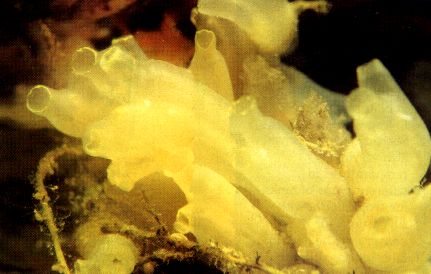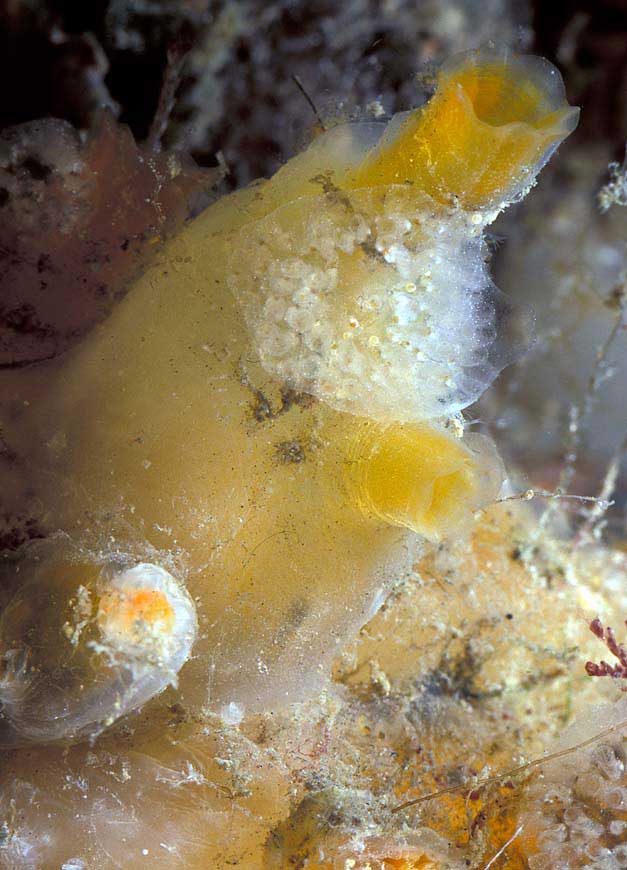& CEPHALOCHORDATA (Lancelets)
|
|
& CEPHALOCHORDATA (Lancelets)
Sea Squirts: Sperm Warfarehttp://www.newscientist.com/news/news_223134.htmlLife under the waves can get pretty crowded when you are a sea squirt vying for space on the rocks. But these sea creatures have a novel weapon--they use their sperm to sabotage the eggs of other kinds of sea squirt. According to a marine biologist in California, this may be the first example of sperm competition between species.(Extract from the New Scientist)

Sea Squirts are fouling
organisms on wharves and piers
|

Lightbulb Sea Squirt, Clavelina lepadiformis |
News
Reports
1 December
2011
The
invasive alien Carpet Sea Squirt, Didemnum
vexillum, has new been discovered
on the shore in Kent. This colonial
ascidian is an invasive
and unattractive smothering species from the Pacific Ocean off Japan. It
has occasionally been recorded in harbours but this is the first time it
has spread to adjoining areas around England.
18
January 2010
 |
 |
Ian Wrigley discovered this peculiar object on the sandbank of Whitesands in Old Town Bay at low tide, at St. Mary's, Isles of Scilly. This large jelly-like mass was solid and heavy. The green translucent organism was quite slimy, and at 30 cm across it was estimated to weight over 1 kg. Most distinctive feature of this mystery object was the presence of many small whitish nodules within (5 to 10 mm), visible through the jelly, seemingly hard but in actual fact soft and they would disintegrate with little pressure from the fingers. A few darker feathery patches were visible inside.
Thetys vagina has been rarely recorded in Irish waters. The species was reported for the first time in Irish waters during November 1988 when hundreds of specimens were taken in trawls at offshore. A few specimens were also found stranded on Ventry Beach, near Dingle, County Kerry during July 1987 & 1988.
 |
|
| Corella eumyota |
Whilst
accompanying the biologists in St. Peter Port Harbour, I found many Goniodoris
castanea sea slugs with their spawn.
They were feeding on the colonial Star Ascidian, Botryllus schlosseri,
and were cryptic. On one 5 x 5 cm
square
colony of Botryllus schlosseri I found six of these nudibranchs.
Dr.
Charles David, President of La Société
Guernesiaise, tells
me this species is a new record for Guernsey.
|
|
|
|
|
News 2018 |
Membership Form |
|